You probably already know just how effective digital ads are when it comes to reaching your audience.
That’s why more than 84% of brands say they see some of the best results with their PPC (pay-per-click) advertising campaigns compared to others they might have in their bag of tricks.
But when it comes to online advertising, search engine optimization (SEO), and search engine marketing (SEM), the decision to choose the right platform can make or break a campaign’s success.
Google Ads and Bing Ads (now known as Microsoft Advertising or Microsoft Ads) stand out as two of the biggest players. If they were ice cream flavors, they’d be the chocolate and the vanilla.
Both have their strengths, but how do you decide which one works better for your business? Neither “flavor” is bad, but it’s all about what works best for your budget, brand, and personal preferences.
Every campaign, whether it’s focused on highlighting specific keywords, ecommerce sales targets, boosting conversion rates, or optimizing your bidding strategies, needs a clear goal. You can’t set those goals until you know which ads platform will best help you do it.
In this step-by-step guide, we’ll break down the key features, tools, and reach of each platform so you can decide where to invest your precious ad dollars.
Google Ads Overview
Google Ads is, without a doubt, the undisputed giant of the online advertising world. It’s the platform most marketers flock to, offering unrivaled reach and cutting-edge tools designed to dominate searches—and for good reason.
Google Ads allows businesses to run search ads, display ads, and even YouTube ads, giving you a multi-channel approach to reach potential customers. With over 5 trillion searches per year on Google, the platform gives you access to a massive audience, even if you’re only trying to target your local area.
Consider this—a small bakery advertising in Los Angeles could reach thousands searching for keywords like "best cake shop near me" in just a few hours. These ad placements, when paired with ad extensions like your phone number, business hours, or sitelinks, can amplify your ad’s effectiveness even further.
The cost, however, does come with a potential headache. Google Ads campaigns manager primarily uses a cost-per-click (CPC) pricing model, meaning you’re paying for every click your ad generates.
On average, CPCs on Google can range between $1 and $3 depending on your industry, with hyper-competitive spaces like law and insurance costing several times more. For example, something like "car insurance quotes" might cost well over $50 a click. While this may sound steep (and it is), the platform’s depth of targeting options and vast audience make it worth it for many.
Google’s robust keyword planner is a goldmine for keyword research, as it helps you identify search trends and keywords with high search volume. The ad customizers personalize messages for specific audiences in real-time.
Add in features like advanced demographic targeting and the option to display video ads on YouTube, and it’s easy to see why Google stays top-of-mind.
Bing Ads Overview
While Bing doesn’t have the same buzz as Google, it’s far from being irrelevant in the digital ad space. Powered by Microsoft and a sister to the Bing search engine, Bing Ads operates across the Bing, Yahoo, MSN, and AOL search networks. With a combined reach of approximately 1 billion global users, the advertising platform offers access to a subtler yet loyal segment of online users.
For small businesses operating on a tighter budget, a Bing Ads campaign can be a goldmine. One of Bing’s key advantages is its lower CPC compared to Google. Data shows that advertisers can pay up to 33% less per click on Bing Ads.
For instance, a keyword in the finance industry that costs $50 on Google Ads might only cost $35 on Bing Ads. This pricing difference allowed a small accounting startup to save hundreds of dollars monthly while still generating significant leads.
Bing also takes things a step further by allowing advertisers to target users based on LinkedIn profiles.
Say you’re running a campaign for a SaaS product catering to decision-makers, Bing lets you specifically target users who list job titles like "CEO" or "Digital Marketing Director" in their LinkedIn profiles. This level of precision is an exceptional advantage, as it can lead to highly relevant and qualified traffic.
To make things even better, Bing Ads also has features like ad scheduling, which is ideal for businesses wanting to bid during specific hours when their audience is most active.
Its device-based targeting also offers more granular control in reaching users on desktop vs. mobile, which adds flexibility that could be invaluable, depending on the nature of your business and your ads campaign.
Key Differences Between Google Ads and Bing Ads
Choosing between Google Ads and Bing Ads can feel like picking sides in a never-ending debate. (Hello again, chocolate and vanilla!).
Now, if you’re launching an online ad campaign, the differences between these two platforms might seem subtle at first glance. But if you’re looking to stretch your budget, or are focused on laser-like precision, those differences can make or break your marketing strategy.
With that in mind, here’s everything you need to know to help you figure out which platform deserves your ad spend.
Audience Demographics
First, consider who you’re trying to reach.
Google Ads commands the larger audience, with Google dominating over 89% of the global search engine market share as of 2024. It’s where everyone goes to search for everything—and that high volume can mean more opportunities for clicks and conversions.
However, bigger isn’t always better. Bing’s user base is smaller, but it skews toward specific, often lucrative demographics. Bing’s audience includes older users and those with higher household incomes.
Multiple studies have reported that Bing users generally have an average household income of over $100,000. If your business caters to professionals, affluence, or even niche services, Bing Ads could provide you with an audience that isn’t as saturated with competitors.
Targeting Capabilities
When it comes to targeting features, Google Ads leads with its advanced, user-friendly options. From remarketing to behavior-based targeting to in-market audiences, Google offers a wealth of tools to refine your customer targeting.
For example, if you’re advertising a luxury home appliance, Google allows you to target users actively researching high-end products, ensuring your ad dollars go further.
Bing, however, has an ace up its sleeve with LinkedIn profile integration. Businesses looking to get hyper-specific—such as targeting professionals by industry, job title, or company—may find Bing’s tools refreshingly useful.
If your small business focuses on B2B services (like coworking spaces or software solutions), Bing’s niche capabilities can connect you with leads in ways Google can’t.
Cost-Per-Click (CPC) Comparison
Now, let's talk dollars and cents. Google Ads generally have a higher cost per click (CPC), reflecting the fierce competition for keywords on the platform. For instance, advertisers in competitive industries like real estate or legal services may again see CPCs reach $50 or more on Google Ads.
While the platform’s broad audience may justify the cost, smaller businesses operating on tight budgets could struggle to compete with larger organizations.
Bing Ads, on the other hand, generally cost significantly less. Microsoft reports an average CPC that is 33% lower than Google’s. Fewer advertisers vying for space on Bing means you can achieve similar results for less money, since there’s less competition at a lower cost.
If you’re a small business owner focused on ROI and have limited funds, investing in Bing Ads for less competitive keywords (or as a complementary strategy to Google Ads) might work well for you.
Ad Features and Innovations
Google Ads is often at the forefront of innovation in digital advertising. Its AI-based smart campaigns help advertisers automate and optimize their ads, making it a great choice for those who don’t have the time or expertise to micromanage campaigns.
Features like responsive search ads and integration with YouTube for video campaigns make it an excellent choice for businesses aiming to reach a visually engaged audience.
Bing Ads, while perhaps less flashy, offers some unique advantages. Advertisers have praised Bing for its transparency in reporting, allowing for clearer insights into ad performance.
Not only that, but Bing also offers advanced device control, enabling advertisers to adjust bids according to device type with more precision than Google Ads. This level of control can significantly benefit businesses targeting specific users (e.g., mobile vs. desktop shoppers).
When to Choose Google Ads
Google Ads is your go-to if your business needs maximum exposure or you’re in an industry with broad customer appeal. For instance, a food delivery service operating in multiple cities would benefit from Google’s massive reach.
Similarly, if your brand has a higher budget, Google Ads’ comprehensive targeting capabilities can help you make the most of your ad spend.
Those of us relying on video campaigns or visually driven marketing should also lean toward Google due to its seamless integration with YouTube, one of the most popular video platforms worldwide.
When to Choose Bing Ads
Bing Ads may be a smarter pick if your business serves a niche market or targets specific demographics.
For example, a boutique travel agency specializing in high-end vacation packages might find better results on Bing, given its audience’s higher average income.
Similarly, budget-conscious small businesses looking to reduce their CPC while maintaining ad visibility should consider experimenting with Bing. Bing Ads also shine for brands focused on tapping into untapped search audiences that competitors may be overlooking.
Can You Use Both Platforms?
Now, here’s the best news you’ll hear all day: this doesn’t have to be an either/or situation. Google Ads and Bing Ads can work together as part of a comprehensive strategy to maximize return on investment (ROI).
Diversifying your ad spend lets you tap into the strengths of both platforms. For example, Google Ads could serve as the primary medium for reaching large, diverse audiences, while Bing Ads could be strategically deployed to target specific user segments or cost-efficient markets.
Businesses that have tested this multi-channel approach often report improved campaign performance. As an example, an e-commerce retailer could use Google Ads for general traffic generation and Bing Ads to promote exclusive products to a higher-income demographic.
Key takeaway here? Analysis is key. Through analyzing performance data from both platforms, you can adjust budgets as needed to focus on which platform delivers the best ROI for your goals.
Make Every Marketing Dollar Count With Kinetic319
Ultimately, choosing between Google Ads and Bing Ads boils down to your business needs, target audience, and budget.
When you fully grasp the unique strengths of each platform, you can make an informed decision—or better yet, test both to see where your campaigns thrive.
Running a small-scale trial with A/B testing within your audience network on each platform can provide valuable insights into what works best for your business, so don’t be afraid to experiment.
Play around with your ad copy, landing page, and different ad formats. Try to get a good idea of what your searchers are looking for. Take stock of key metrics like cost-per-click, click-through rates (CTR), and other markers to get a complete picture of which is working best.
Want a streamlined way to create and optimize your ad campaigns? Partner with Kinetic319 and start building ads that truly resonate with your audience. Get moving with us today!

